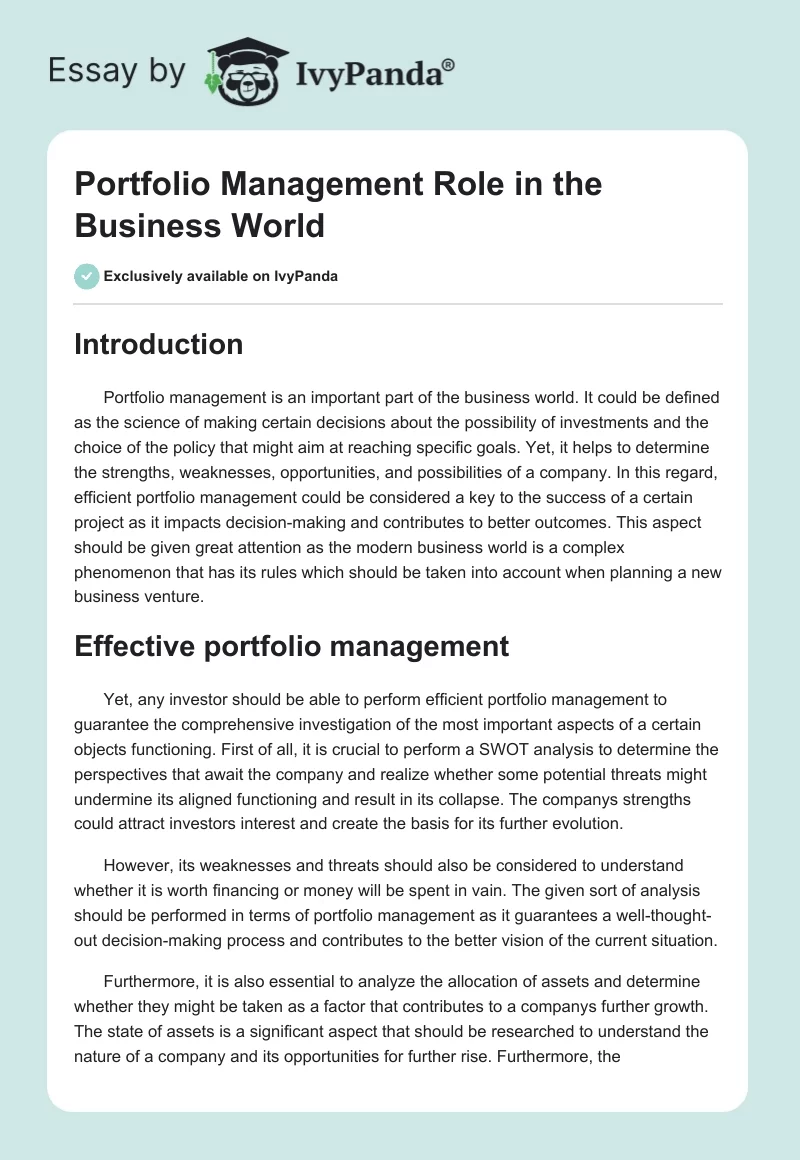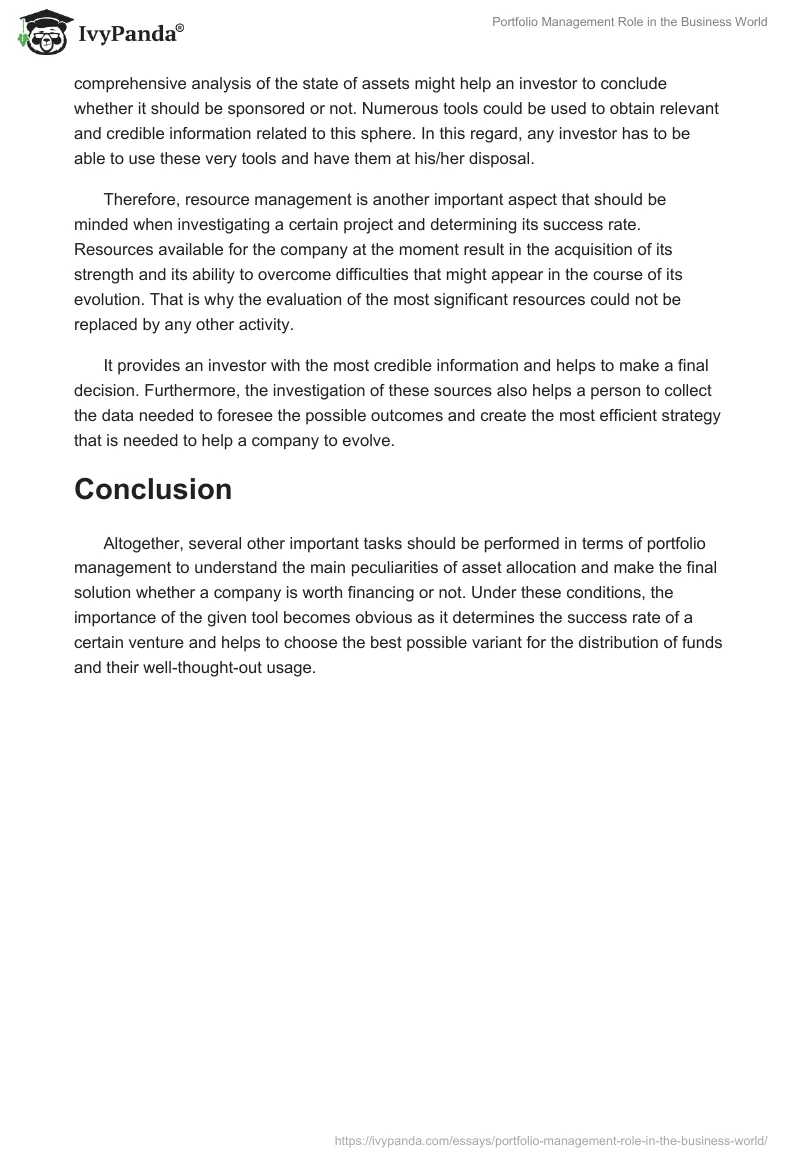Introduction
Portfolio management is an important part of the business world. It could be defined as the science of making certain decisions about the possibility of investments and the choice of the policy that might aim at reaching specific goals. Yet, it helps to determine the strengths, weaknesses, opportunities, and possibilities of a company. In this regard, efficient portfolio management could be considered a key to the success of a certain project as it impacts decision-making and contributes to better outcomes. This aspect should be given great attention as the modern business world is a complex phenomenon that has its rules which should be taken into account when planning a new business venture.
Effective portfolio management
Yet, any investor should be able to perform efficient portfolio management to guarantee the comprehensive investigation of the most important aspects of a certain objects functioning. First of all, it is crucial to perform a SWOT analysis to determine the perspectives that await the company and realize whether some potential threats might undermine its aligned functioning and result in its collapse. The companys strengths could attract investors interest and create the basis for its further evolution.
However, its weaknesses and threats should also be considered to understand whether it is worth financing or money will be spent in vain. The given sort of analysis should be performed in terms of portfolio management as it guarantees a well-thought-out decision-making process and contributes to the better vision of the current situation.
Furthermore, it is also essential to analyze the allocation of assets and determine whether they might be taken as a factor that contributes to a companys further growth. The state of assets is a significant aspect that should be researched to understand the nature of a company and its opportunities for further rise. Furthermore, the comprehensive analysis of the state of assets might help an investor to conclude whether it should be sponsored or not. Numerous tools could be used to obtain relevant and credible information related to this sphere. In this regard, any investor has to be able to use these very tools and have them at his/her disposal.
Therefore, resource management is another important aspect that should be minded when investigating a certain project and determining its success rate. Resources available for the company at the moment result in the acquisition of its strength and its ability to overcome difficulties that might appear in the course of its evolution. That is why the evaluation of the most significant resources could not be replaced by any other activity.
It provides an investor with the most credible information and helps to make a final decision. Furthermore, the investigation of these sources also helps a person to collect the data needed to foresee the possible outcomes and create the most efficient strategy that is needed to help a company to evolve.
Conclusion
Altogether, several other important tasks should be performed in terms of portfolio management to understand the main peculiarities of asset allocation and make the final solution whether a company is worth financing or not. Under these conditions, the importance of the given tool becomes obvious as it determines the success rate of a certain venture and helps to choose the best possible variant for the distribution of funds and their well-thought-out usage.


